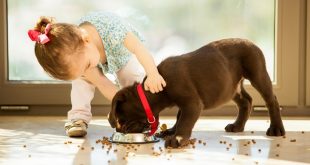Pets with white coats are popular among show animals. Dog lovers who intend to own fancy-looking pets prefer snowy white-coat furry friends. However, it becomes tricky to maintain the milky white coat as several factors spoil the pure white appearance.
A speck of dirt or stain will appear and thus ruin your pup’s new white fur coat. Unfortunately, there is no magical formula to get white fur. But, here is the secret to whiter skin you must know. It requires gradual and regular maintenance.
What are the common stains to look out for? Listing out the internal and external reasons:
Tear marks:
Dogs get tear stains. These stains appear near the eyes. It is evident in lighter-fur pets and not much in darker-coat pups. Dog breeds with the tear problem tend to show rust-colored or brownish stains near the eyes that look like yeast debris.
Sometimes these are tear stains, but sometimes these are the actual cause of yeast infection in dogs. Check with your vet before cleansing the area to get the snowy white look. Some pets also suffer from tear duct issues or inadequate eyelashes that make the dog tear more than what is considered normal, thus leaving extra reddish marks.
Foul mouth:
Poor hygiene is one major cause of white coat spoilers. The food colors and dyes from the treats and chewing toys can leave various stains on the coat. Your dog may enjoy purple or brown treats (paints or mineral stains) and roam with a ring around its mouth that eventually spreads everywhere on its fur coat.
Your fur friend may also get dark reddish stains from the tap water that contains high minerals. Look for the feeding bowls, the comforter they sleep in, and the rugs for receding or fading dye marks.
Sometimes, the cracks in the feeding bowls harbor bacterial growth that leads to nasty spots on your pup’s fur. In addition, microscopic change can result in hair discoloration and blemishes that keep increasing.
Self-licking:
Some breeds of dogs are obsessed with self-cleaning. Unfortunately, it results in multiple licking of body parts. You might arrange for regular grooming sessions for your pet. If your dog has self-licks the coat and paws, it will eventually cause bacterial stains and even food dye marks on lighter skin.
The saliva increases bacterial growth. The issue can increase further when spread on hair and leaves ugly stains that turn darker over time. Check the areas near the pet’s paws, hind legs, and posterior. These are areas that get full colors from obsessive licking.
Cleansing products:
Surprisingly, some cleansing products like shampoo, conditioner for softening the fur, and wipes can cause staining on the skin. Bath time is the ideal time to eliminate all the dirty marks. However, sometimes wrong product or a solid dye base formula can lead to temporary discoloration of your pet’s white fur.
Read the instructions before trying any new product that entices you in commercials. Several products are exclusive for lighter hair breeds and help eliminate the nasty marks from teary eyes and brownish paws.
Read Also: Why Shouldn’t You Cut Your Dog’s Coat?
Tips to Keep Your Dog’s Fur White:
Steps to maintain shiny white coat as snow – Dos and Don’ts
- Soft fur brushing the dogs’ coats is an important activity. You can get rubber combs that help gently stroke the fur to remove any dry debris from the body. Avoid brushing multiple times a day if your pet breed is shedding hair. Use the right brush that is suitable for your pet’s hair type.
- Use some corn starch to do dry shampooing of your pet’s fur. Sprinkle some starch powder over the coat and rub your fingers in a circular motion. You can see two things happening: first, it gently massages your dog, and second, the corn starch removes excess oil from the scalp. Sometimes oily skin results in discoloration of the white fur in dogs. Corn starch helps in removing the funky dog smell and fluffs up the hair.
- Get one portion of baking soda with a few drops of water to make a thick paste. Apply this paste using a spoon or toothbrush on the evident stains and leave it dry. Once it dries completely, remove the soda residue using wet wipes or a wet toothbrush. Baking soda is a safe and effective natural bleach that can eliminate dark marks without running the dog’s fur.
- Use whitening shampoo and products at least once a month on your pet. You can find the right cleaning products from your vet or animal toiletry store. Most of the whitening products are in blue or purplish tinge. It helps bring back the shine on the white coat. First, wet the hair of your pet entirely with warm water. Then, you can use little shampoo to start the cleaning process. Let the product sit on your dog for a few minutes, then rinse away. After thoroughly rinsing the fur, use a white towel to dry the coat.
- Ensure that you use wipes when bathing the dog to clean his eyes and mouth area. The cleaning products may sometimes have a strong odor and cause discomfort to your pup. Take extra care in removing any shampoo or conditioner from entering their eyes, ears, nostrils, and mouth.
- Get food-safe containers that do not fade when your pet has its meals or water from it.
You can maintain snow-white fur for your dog, especially when you take all the precautions and care. However, it is better not to feel obsessed with the white appearance and leave a few stains here and there.

 DogExpress
DogExpress



















 in Chandigarh, India.
in Chandigarh, India. 
